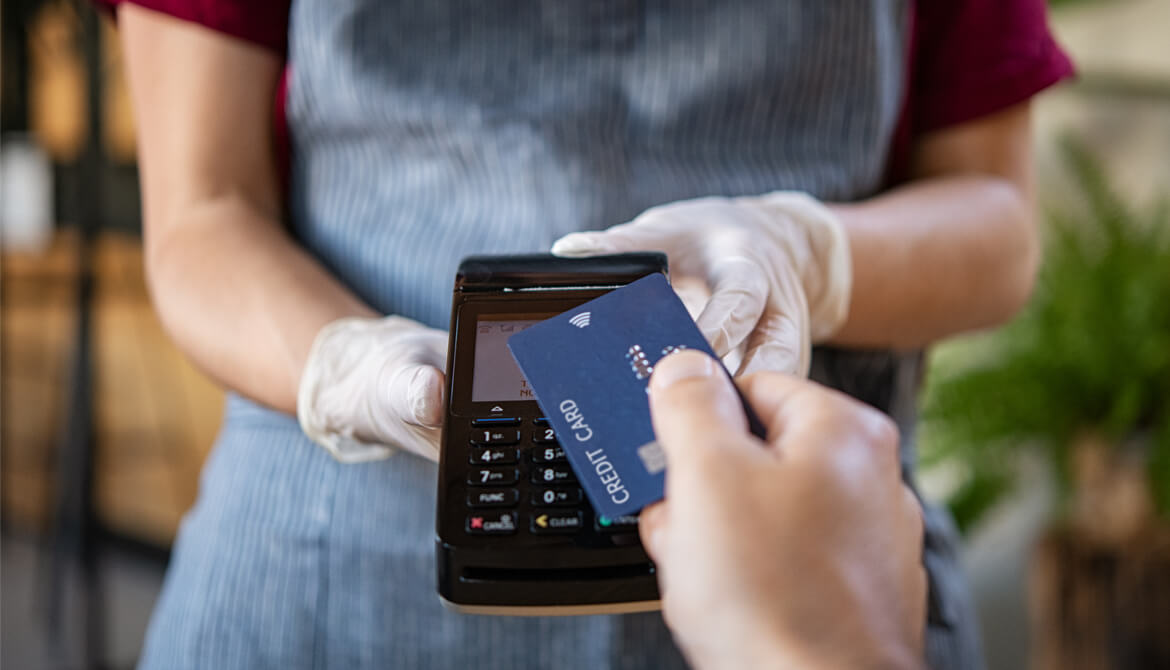4 minutes
Tap-to-pay went from novel to essential in six weeks; here’s why.
Sponsored by CUES Supplier member Harland Clarke
New realities have made us all acutely aware of the spread of viruses and the role that contact plays in their spread. As a result, demand for technologies that eliminate the risk and alleviate the fears of consumers and merchants is skyrocketing.
According to the May 2020 article, “Impact of COVID-19 on Contactless Payments” by The Futurist Group, about 38% of consumers now view contactless as a basic need or feature of payments—up from 30% the year before.
It’s too early to understand all the long-term effects that social distancing, in-home sheltering and a closed economy will have on consumer lifestyle and behavior. Nonetheless, the recent surge in contactless payments will not reverse as pandemic fears subside. There is tangible evidence that contactless payment capability powers a better member experience. It is faster, easier and more convenient, in addition to the obvious safety benefit of avoiding contact with common surfaces—like cash and payment terminals.
What the industry needed to drive adoption was a trial. It needed consumers to try it once, and those benefits would present themselves. The pandemic sparked that trial and is quickly turning consumers into adopters of this better payment experience.
Contactless Card Technology Has Now Fully Emerged
While still considered by some to be an emerging technology, contactless—or tap-and-go—credit and debit cards currently comprise more than half of all payment cards in the world. Millions of consumers enjoy the speed and convenience of contactless payment technology for everyday purchases. According to an April article by PaymentsSource, experts estimate about 65% of U.S. merchant locations accept contactless payments.
Start Offering Contactless Now to Stay Ahead of a Flattening Curve
Consumers want it. Merchants support it. And no longer can issuers afford the luxury of time. Keeping your card top-of wallet means staying ahead of a flattening curve. The good news is, as a result of the U.S. EMV liability shift of 2015, you probably already issue chip-enabled cards, which means you are half way to offering members the security and convenience of dual-interface.
Consumers Demand the Freedom of Choice
Dual-interface cards offer consumers the choice of payment technologies—contact (EMV chip) and contactless (tap-and-go antenna). The flexibility of payment options is one of many reasons dual-interface cards are widely considered the base card payment technology moving forward. Here are a few more of the combined benefits of dual-interface cards:
- They’re secure. The contactless technology of dual-interface offers the same protection as a contact-only EMV card, making them more secure than a magstripe card or cash.
- They’re fast. Contactless transactions average 15 seconds or less. The reality is we live in a fast-paced, Amazon-effect world. Time is precious; lines and waiting are unacceptable. To keep up, you must offer your members a payment option that lets them tap and go.
- They’re easier than cash. Ease of use could be a large contributing factor for adoption, particularly for transactions under $25, of which 80% are currently made with cash, according to a FreedomPay study published in January. Additionally, with cash usage on the decline, the ability to offer contactless cards as a form of payment will improve the member experience for those who prefer contactless payments, while capturing more day-to-day transactions.
- They put the cardholder in control. Contactless payments allow a cardholder to complete a transaction while maintaining possession of their card and without touching the point-of-sale device.
- Consumers love their cards. For many of your members, it’s about time for first-gen chip card replacement. What better way to replace outdated technology than with state-of-the-art dual-interface technology that delivers a better cardholder experience?
Contactless cards offer many benefits to your credit union, as well. Industry research shows cards that contain both the chip and antenna grow interchange revenue, increase average card spending, support top-of-wallet status, and increase the potential to convert traditional low-cost, on-the-go cash purchases to cards.
Historically, technology has been a key driver of human behavior—interestingly, this time, it’s the other way around. Consumer demand for contactless payments is increasing. It’s exciting just to be a part of it. It’s making lives better, easier, more secure and safer. It’s putting power into consumers’ hands and peace into their minds. All this makes delivering a complete card program more critical than ever.
Let’s continue the important discussion about making the move to dual-interface cards for your members.
Nicole Machado is executive director of card services for CUES Supplier member Harland Clarke. She is responsible for the overall strategy and operations of Harland Clarke’s card business, which includes card manufacturing, central issuance, instant issue and prepaid solutions.





